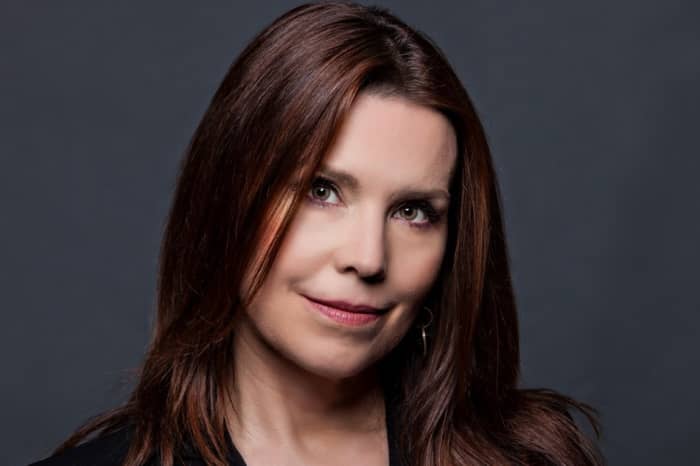For nearly three decades, Intuitive has been developing innovative approaches in the field of minimally-invasive care. We are guided by the belief that minimally-invasive care can be life changing, that patient outcomes can be profoundly improved and that enhanced clinical outcomes can sustainably lower the total cost of comprehensive care.
Our focus is on helping customers in Europe and around the world achieve better outcomes, better surgeon and care team experiences, better patient experiences and lower cost of care. Positive impact in these areas requires a holistic effort that includes not only leading-edge, integrated systems and software, but also an ecosystem of education and support that extends across the patient care pathway and the broader health care system.
What is robotic-assisted surgery?
27 years ago, Intuitive launched the da Vinci robotic-assisted surgical system, transforming the field of minimally-invasive surgery.
Robotic-assisted surgery is a form of minimally-invasive surgery performed by a surgeon using a computer-assisted system to operate through small incisions using tiny, wristed instruments. Robotic-assisted surgical systems do not perform surgery on their own and they do not replace surgeons. Surgeons completely control da Vinci robotic-assisted surgical systems, while seated at an ergonomic console that uses high-definition, 3D vision to magnify the patient’s anatomy. The surgical system translates the surgeon’s hand movements in real time to bend and rotate the instruments with greater flexibility, precision and range of motion than the human hand. This approach can augment a surgeon’s skills and capabilities while allowing them to continue to apply their judgment and experience.
To date, more than 12 million da Vinci robotic-assisted surgical procedures have been performed worldwide — including more than 1.2 million in Europe — across a range of procedures including urology, gynecology, colorectal, thoracic, general surgery and more.
Robotic-assisted surgery is a form of minimally-invasive surgery performed by a surgeon using a computer-assisted system to operate through small incisions using tiny, wristed instruments.
A growing body of research, including more than 34,000 peer-reviewed studies, suggests that minimally-invasive, robotic-assisted surgery can offer patients benefits in many cases, depending on the procedure, including one or more of these benefits: less blood loss, fewer complications, shorter hospital stays, and less chance of hospital readmission.[i]
The added value of robotic-assisted surgery for European health care systems
Since the first robotic-assisted da Vinci prostatectomy was performed in Germany nearly 20 years ago, more than 1,500 da Vinci systems have been installed in Europe, highlighting Europe’s strong demand for this innovative technology. But, while Europe has helped drive this technology forward, more can be done to help hospitals in Europe become world leaders in the 21st century.
Similar to health care systems around the world, Europe faces challenges including rising health care costs, a pressured workforce, aging populations and increasing burdens of disease. At the same time, patients across Europe are seeking equitable access to innovative, high-quality care.
Using our more than two decades of experience working with hospitals and health care systems across Europe, we strive to offer solutions to these multifaceted challenges that are aligned with our customers’ clinical and economic capabilities and goals. A key insight from our experience is that we must provide more than a “robotic-assisted surgical system”; we must be a “technology-enabled solutions partner and provider”. Robotic-assisted surgery as a modality can help drive better patient outcomes; robotic-assisted surgical programs as a key part of a hospital’s care pathway can help optimize the cost and efficiency and advance the delivery and quality of care.
As one example, we collaborate with hospitals to examine opportunities to sustainably increase throughput and introduce efficiencies that can allow them to treat more patients and reduce patient backlogs. Solutions that our customers have enacted as a result of these engagements include improving operating room set up time, scheduling optimization, standardizing pre-operative planning for care teams, and starting surgical days earlier.
In all cases, we work to assure that any effort is seamlessly integrated into the workflows of our hospital customers and their broader patient care pathways, and that our success is defined and measured in alignment with their goals.
Training
Central to our holistic approach is our technology training, which is essential to maximize patient safety and a vital part of any successful robotic-assisted surgery program. Our four-phase training pathway combines skills and technology training with opportunities for health care professionals around the world to learn from their peers. Our robust training offerings include a combination of simulation, virtual learning, in-person observation and hands-on training, with high-quality tissue models and peer-to-peer mentoring, proctoring and advanced learning opportunities. The training tools and technologies we offer are informed by our unique understanding of best practices and can help users build their skills by targeting individualized areas for improvement.
We believe that our robust training programs are contributing to the development of the next-generation health care workforce.
Last year, we became the largest provider of robotic-assisted surgical technology training to have our full global training portfolio accredited by The Royal College of Surgeons. And, our industry-leading offerings are more available than ever across both virtual and in-person opportunities; we now have more than 25 training centers and partnerships across Europe.
Looking forward, we believe that our robust training programs are contributing to the development of the next-generation health care workforce and motivating existing surgical staff to stay within our health care systems. We will continue to evolve and innovate our training offerings by listening to and learning from surgeons and teams to identify the practices that lead to better results and hone our efforts to offer meaningful interoperative guidance.
Total cost to treat
While there is an upfront investment in robotic-assisted technology, the experience of hospitals across Europe shows that da Vinci systems can help realize a return on this investment. The benefits of minimally-invasive care — fewer complications and readmissions, less blood loss, less pain — help to avoid higher ‘downstream’ costs and resource use associated with traditional, or “open” surgery, which typically requires longer hospital stays and presents a greater risk of post-operative complications.[ii] Robotic-assisted approaches, like the da Vinci system, can therefore help to reduce the costs and resources associated with a complete patient journey, or ‘episode of care’.
An important indicator of the economic value of this cost avoidance can be found in hospitals’ investment decisions in recent years. Based on their own medical records, financial data, and unique reimbursement and cost structures, hospitals are increasingly choosing to commit to robotic-assisted technology. Our own data shows that the number of hospital Integrated Delivery Networks, or IDN’s, with more than seven da Vinci systems has increased by more than 150 percent in the past five years.[iii] We believe this demonstrates a trend from cautious adoption to standardization based on recognized value. This trend brings the benefits of minimally-invasive care to an increasingly larger number of users, helping to accelerate and compound the potential savings to the health care system over time.
A vision for 2030: a future of European health care excellence
The next European Commission term will almost reach the end of this decade, serving as a useful marker for us to imagine where Europe could be in health care delivery by 2030.
Looking ahead, it will be essential that policymakers create an environment where advancements in robotic-assisted tools and technology, digital health and patient-focused innovation can be seamlessly integrated in a way that prioritizes patient safety and facilitates equitable access to and adoption of innovative technology.
The infrastructure and tools needed for future success are already present. Europe can lead the way in creating this environment, in part by avoiding policies which inhibit this kind of integration and innovation through duplicative or conflicting regulatory structures. We look forward to contributing to an ambitious agenda to bring cutting-edge health care, training, and innovations to European patients and health care professionals.
This material may contain estimates and forecasts from which actual results may differ.
[i] Bhama, A. R., et al. (2016). “Comparison of Risk Factors for Unplanned Conversion from Laparoscopic and Robotic to Open Colorectal Surgery Using the Michigan Surgical Quality Collaborative (MSQC) Database.” Journal of Gastrointestinal Surgery: 1-8
Oh, D. S., et al. (2017). “Robotic-Assisted, Video-Assisted Thoracoscopic and Open Lobectomy: Propensity-Matched Analysis of Recent Premier Data.” Annals of Thoracic Surgery 104(5): 1733-1740.
Ran, L., et al. (2014). “Comparison of robotic surgery with laparoscopy and laparotomy for treatment of endometrial cancer: a meta-analysis.” PLoS ONE 9(9): e108361.
Speicher, P. J., et al. (2014). “Robotic Low Anterior Resection for Rectal Cancer: A National Perspective on Short-term Oncologic Outcomes.” Annals of Surgery.
Tam, M. S., et al. (2015). “A population-based study comparing laparoscopic and robotic outcomes in colorectal surgery.” Surgical Endoscopy and Other Interventional Techniques.
Pilecki, M., et al. (2014). „National Multi-Institutional Comparison of 30-Day Postoperative Complication and Readmission Rates Between Open Retropubic Radical Prostatectomy and Robot-Assisted Laparoscopic Prostatectomy Using NSQIP (National Surgical Quality Improvement Program)“ Journal of Endourology, 430 – 436.
Tewari A, et al. “Positive Surgical Margin and Perioperative Complication Rates of Primary Surgical Treatments for Prostate Cancer: A Systematic Review and Meta-Analysis Comparing Retropubic, Laparoscopic, and Robotic Prostatectomy,” Eur Urol. 2012 Feb 24.7.
Carbonell, A. M., et al. (2017). “Reducing Length of Stay Using a Robotic-Assisted Approach for Retromuscular Ventral Hernia Repair: A Comparative Analysis from the Americas Hernia Society Quality Collaborative,” Annals of Thoracic Surgery.
Lim, P. C., et al. (2016). “Multicenter analysis comparing robotic, open, laparoscopic, and vaginal hysterectomies performed by high-volume surgeons for benign indications,” International Journal of Gynecology and Obstetrics.
O’Neill, Michelle, et al. “Robot-assisted hysterectomy compared to open and laparoscopic approaches: systematic review and meta-analysis,” Archives of gynecology and obstetrics 287.5 (2013): 907-918.
Geppert B, Lönnerfors C, Persson J. “Robot-assisted laparoscopic hysterectomy in obese and morbidly obese women: surgical technique and comparison with open surgery.” Acta Obstet Gynecol Scand. 90.11 (2011): 1210-1217. doi: 10.1111/j.1600-0412.2011.01253.x. Epub.
[ii] Id.
[iii] Intuitive internal data measuring from year end 2017 to year end 2022.
Source link
#Harnessing #innovation #roboticassisted #surgery














